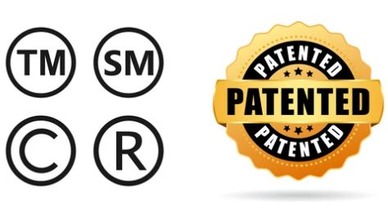Decoding The Scepticism Of Overlap Between Patents Law And Competition Law
In the fast growing economy, innovation is necessary for businesses and Patents as an intellectual property rights protects that innovation. Intellectual property rights provide a negative right in other words a monopoly right to the creator or Inventor over their creation or Invention. Businesses can use this intangible right to gain a competitive edge in the market. On the other hand competition law aims to maximize social welfare by condemning monopolies. The goal of competition law is to ensure fair functioning of the market.[1] At a glance both the laws may seem to be conflicting but Intellectual property ensures fair amount of competition in the market which is also the goal of competition law.[2] Hence it can be said that IP is pro-competition.
[Image Source: Shutterstock]
There has to be a perfect balance between patents law and competition law to provide economically meaningful monopolies.[3] Competition law does not per se prohibit the monopoly rather it prohibits abuse of monopoly rights which are sufficient to hamper the fair play of market. The role of competition law does not come into the picture unless the patent holder acts unlawfully, there can be various ways of unlawfully exploiting the patent like exclusionary conduct by business, refusal to provide goods or license etc.
Prima facie it may appear that the relationship between IPR and competition law is contradictory but they are pointed towards same goal of consumer welfare. Harmoniously application of both the laws creates a boundary within which monopoly over the innovation may be exercised. Which will result into innovation in dynamic competition.
JUDICIAL TUSSLE OF JURISDICTION BETWEEN PATENTS ACT AND COMPETITION ACT
The tussle between two laws is not limited to the object but it also extends to the jurisdiction. The conflict from time to time has been put up before the Indian Courts and the courts have settled the law in this regard. The conflicting issue of IPR and competition laws was first raised in the case of Super cassettes Industries Ltd. v. Union of India & Ors.[4] the apex court held that even though copyright creates monopoly right for the holder but this exclusive right cannot disturb the market as it will violate competition law. IPR lets the creator enjoy the benefit of their labour but it is not absolute. The court in this case dismissed the petition and held that powers of competition commission and copyright board govern different aspects of law.
Later in the case of Telefonaktiabolaget LM Ericsson v. Competition commission of India and Anr.[5] the issue regarding the jurisdiction of CCI to examine the allegation of anti-competitive conduct and abuse of dominant position was brought in light. The court held that CCI has a jurisdiction to examine the allegation of anti-competitive trade practice and abuse of dominant position arising out of the monopoly right granted through patent, even if patents act contains efficacious remedies.
Again in the case of Mosanto holding Pvt. Ltd. v. Competition commission of India[6], the conflict between the jurisdiction of Competition commission of India and Controller of patents was in question. The court again re-iterated its precedent by quoting the object of these laws, which are for Intellectual property to promote innovation and provide incentives to innovators and for competition laws it is to ensure economic growth and consumer welfare.
The Judiciary resolves the jurisdictional tussle from case to case basis and it is true that there exists a delicate link between Intellectual property rights (Specifically patents) and competition law. Too high or too low implementation of either patents law or competition laws can distort fair play of market. Hence balance has to be struck to ensure fulfilment of objective under both the laws.
STATUTORY TUSSLE OF JURISDICTION BETWEEN PATENTS ACT AND COMPETITON ACT
The basis of jurisdictional conflict between controller of patents and competition commission of India arises out of the fact that Patents Act, 1970 is a self-sufficient act, wherein the act provides for remedy in case the patentee is misusing its monopoly rights.
Section 140 of the Patents Act, 1970[7] provides remedy to the evil of abuse of dominance as it elaborates upon the conditions which are unlawful to be inserted in an agreement for sale/purchase of a patented article. By the virtue of this provision the agreement containing any restrictive or unfair conditions could be challenged by filing a civil suit for declaring the agreement to be void. The legislative intent for the Patents Act, 1970 may be that to give powers to the controller rather than the competition commission. But this provision is usually ousted as the competitor in the market files complaints before the competition commission and not to the controller.
Further Section 83 of the Patents Act, 1970[8] provides that patent right should not abused by the patent holder. However the patent act is silent regarding what would constitute the “restrain to trade” but Section 4 of the competition act, 2002 defines “limits or restricts”. Also section 83 does not mentions about the forum which has the power to decide regarding the abuse.
Although confusion may be created by several provisions having same object but Section 60[9] of the Competition Act, 2002 provides that competition act would have an overriding effect over the other laws and hence the jurisdiction will always fall within the limits of competition commission, thereby clearing the conflict.
CONCLUSION
Indian judiciary from time to time have mis-interpreted that patents rights creates monopoly and would lead to abuse of dominant position in the market. The courts certainly lacks the technical expertise to understand technology involving patent and economics involving competition which leads to one dimensional interpretation ignoring other facets.[10] The courts needs to look into the fact that granting of patent itself is not a guarantee of commercial success able to create monopoly, there are set boundaries in the law regarding the use of patent rights that has to be adhered.
Author: Shashank kesarwani, a student of School of law, University of petroleum and energy studies, in case of any queries please contact/write back to us at support@ipandlegalfilings.com or IP & Legal Filing.
[1] WIPO, Competition and Patents
[2] Khurana & Khurana, Analyzing the intersection of competition law and IPR https://www.mondaq.com/india/trademark/1117244/analyzing-the-intersection-of-competition-law-and-ipr
[3] Divya S., Abuse of dominat position by patent holders-A critical analysis Lex Humanitariae
[4] Super Cassettes Industries Ltd. v. UOI & Ors ,W.P.(C) 1119/2012 decided on 04.10.2012.
[5] Telefonaktiabolaget LM Ericsson (Ericsson) v. CCI and Anr W.P.(C) 464/2014 decided on 30.03.2016.
[6] W.P.(C) Nos. 1776/2016 & 3556/2017 decided on 20 May, 2020.
[7] Section 140 of The Patents Act, 1970.
[8] Section 83 of The Patents Act, 1970.
[9] Section 60 of The Competition Act, 2002.
[10] Mansee Teotia & Manish Sanwal, Interface between competition law and patents law: A Pandora box



